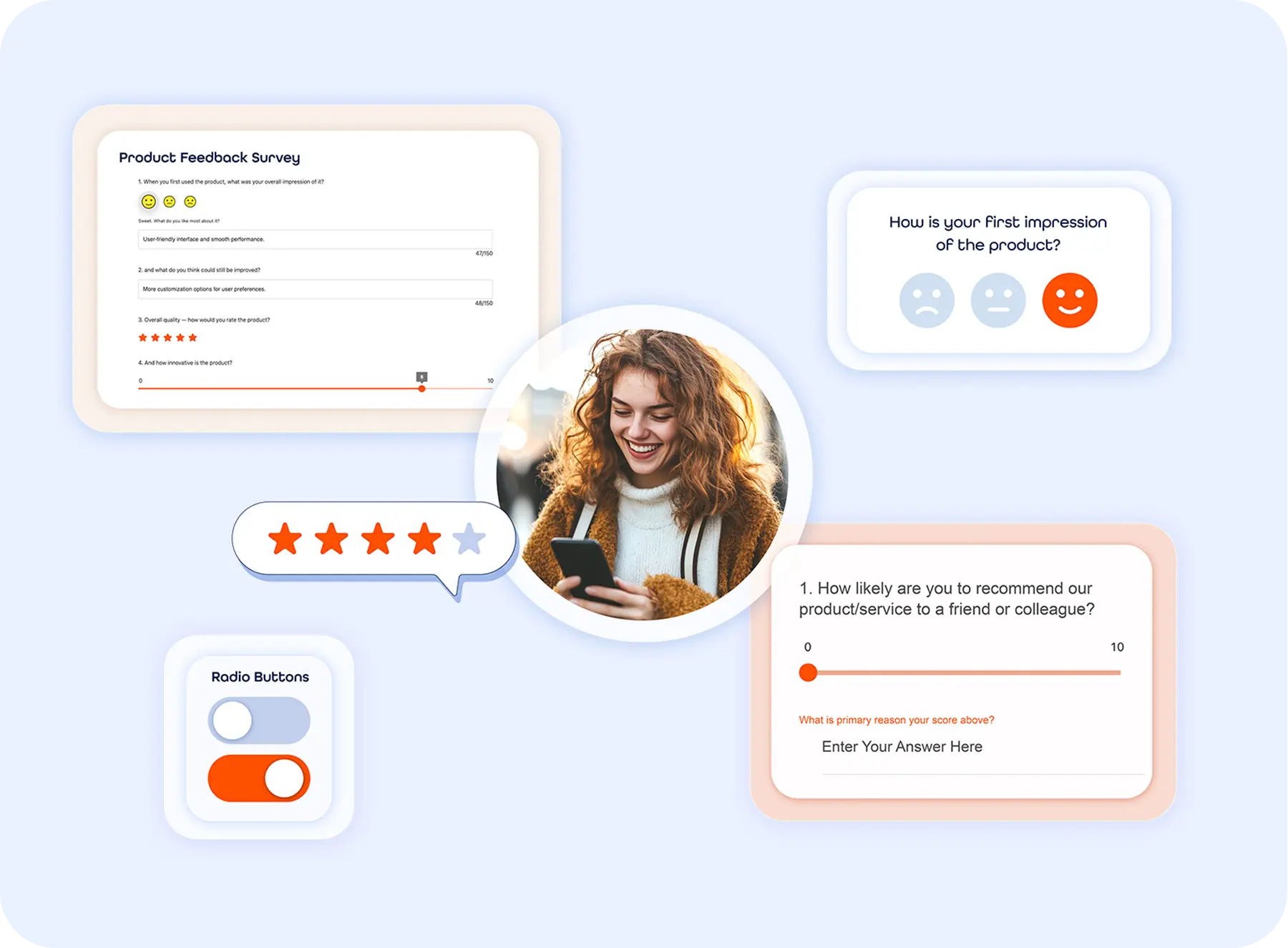Natural Language Processing
Natural Language Processing (NLP) is a field of artificial intelligence that allows computers to interpret and communicate in human language. It’s what makes it possible for machines to read, understand, and respond to human language without the need for programming or coding knowledge.

How Does NLP Work?
NLP leverages a combination of linguistics, machine learning, and deep learning techniques to bridge the gap between human language and machine understanding. Here are some of the steps of this process:
1. Text Preprocessing
In order for a machine to understand human language, the raw text needs to be cleaned and organized. Text preprocessing helps simplify the data for this purpose with various tools:
Tokenization: Breaks down text into smaller units, such as individual letters, syllables, or words.
Normalization: Converts text into a consistent format by utilizing techniques such as lowercasing all words or removing punctuation marks.
Stop Word Removal: Filters out common words such as conjunctions to focus on important parts of a text.
Noise Removal: Gets rid of irrelevant elements, such as special characters, links, or extra white space.
2. Linguistic Analysis
Once the text is cleaned and prepared, NLP tools analyze its structure and meaning to understand how the language works. Key components include:
Syntax Analysis: Identifies the grammatical structure of a sentence by utilizing tools such as Part-of-Speech (POS) Tagging to label the roles of words as a noun, adjective, or verb.
Semantic Analysis: Aims to understand the meaning of words and how they change depending on context. For example, “bass” the fish vs. “bass” the musical instrument.
Named Entity Recognition (NER): Detects real world entities such as names of people or organizations, locations, dates, or currencies.
3. Vectorization / Feature Extraction
After the text is cleaned up and linguistically analyzed, the next step is for it to be converted into a numerical format that machine learning models can work with. Text data is transformed into vectors, which capture useful information with tools such as:
Bag of Words (BoW): Counts how often each word appears in a text.
Word Embeddings: Maps words into vector spaces where similar words are closer together.
4. Modeling
Machine learning and deep learning models are trained to recognize patterns and make predictions based on the vectorized data.
Machine Learning Models: Works well for smaller datasets and simpler tasks, such as spam detection.
Deep Learning Models: Can handle bigger datasets and more complex patterns to perform tasks such as translation.
5. Evaluation & Fine-Tuning
After being trained, models need to be evaluated to see how well they perform and fine-tuned for improvements.
Evaluation: Uses metrics such as Accuracy, Precision, Recall, F1 Score, BLEU (Bilingual Evaluation Understudy) Score, ROUGE (Recall-Oriented Understudy for Gisting Evaluation), and Perplexity.
Fine-Tuning: Adjusts the model by tuning hyperparameters such as learning rate, and using more training data.
What are the Benefits of NLP?
In marketing, NLP helps brands analyze customer feedback, personalize content, automate support, and drive deeper engagement across multiple channels.
1. Better Customer Insights
NLP can analyze vast amounts of unstructured data, such as customer feedback, reviews, survey responses, chat logs, and social media comments, to gather real-time insights into customer behavior, needs, preferences, and pain points.
2. Personalized Customer Experiences
With NLP, brands can tailor messaging and content to match customer intent, tone, and behavior. This level of personalization improves customer engagement and strengthens loyalty.
3. Automated Customer Support
AI-powered chatbots and virtual assistants can leverage NLP to handle common inquiries and troubleshoot issues 24/7 across various channels. This makes businesses more accessible for customers, reduces response time, and lowers operational costs.
4. Data-Driven Campaign Optimization
NLP tools can analyze how customers are reacting to marketing messages by identifying sentiment, keywords, and emotional tone to help refine content strategy and campaign messaging. These AI insights improve message relevance and improve KPIs such as click-through rates, open rates, and conversion rates.
5. Global Reach
NLP enables real-time language translation and localization, allowing brands to reach a wider audience and expand market reach, as well as uphold brand consistency across different regions.
Real-World Examples of NLP for Different Industries
Various industries harness the power of NLP to enhance customer experiences and foster customer loyalty.
1. Fintech
Banks and fintech companies use NLP-powered chatbots to handle common customer service queries such as balance inquiries, transaction histories, and credit score updates. Beyond just customer support, financial institutions employ NLP for fraud detection by analyzing transaction descriptions and patterns for anomalies, flagging suspicious activities based on natural language patterns.
2. E-Commerce
E-commerce brands use NLP for customer sentiment analysis on social media and review sites, helping them identify popular products, detect negative feedback, and improve service offerings in real time.
3. Telecom
Telecom companies utilize NLP to power their customer service chatbots and virtual assistants, allowing users to resolve billing issues, manage plans, and track service outages via natural language conversations. NLP also helps telcos analyze customer interactions to tailor offers and services based on factors such as customer preferences, usage patterns, and location data.
4. Travel & Hospitality
Travel & hospitality companies leverage NLP to personalize the travel booking experience by analyzing customer queries and recommending tailored travel packages, activities, and hotels based on the traveler’s preferences. NLP-powered chatbots also assist customers during the booking process, answering questions and guiding users to relevant options.
5. Healthcare
Healthcare organizations can use NLP to provide personalized health advice via a chatbot that can interpret patient symptoms, ask follow-up questions, and recommend next steps. NLP can also help with sentiment analysis to track patient sentiment and satisfaction during virtual consultations or aftercare interactions.
evamX: Leveraging NLP for Meaningful Customer Interactions
evamX is an AI-powered marketing hub that harnesses tools such as NLP to connect with customers in real-time to understand their needs, preferences, and struggles.

With modules such as Insight Tracker and Customer Feedback, evamX can gain valuable insights into what customers actually want, gauge what could be improved, and foster meaningful customer connections.
Join the Evam Community
Subscribe to receive the latest insights, news, and updates straight to your inbox.


